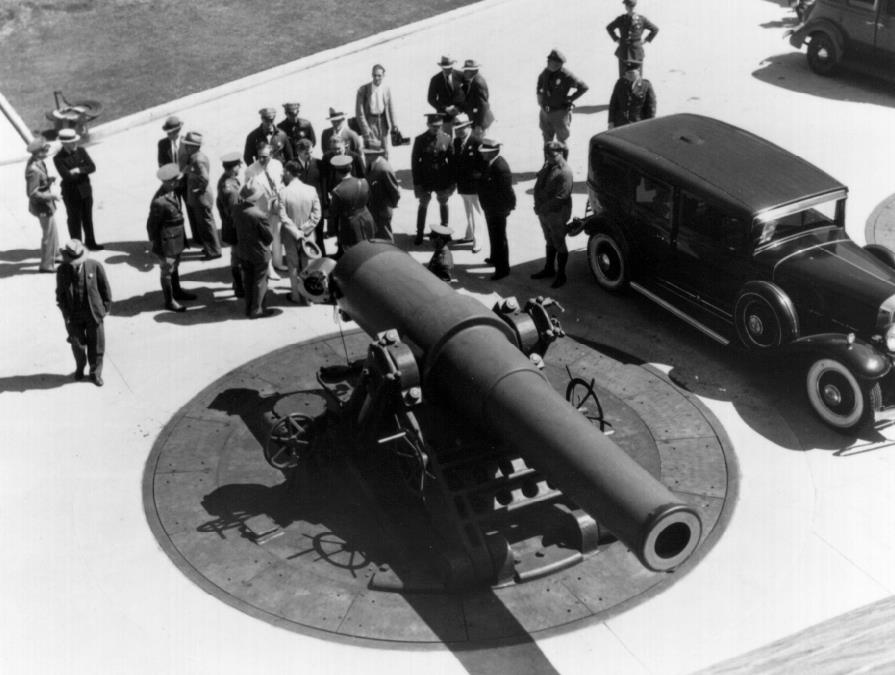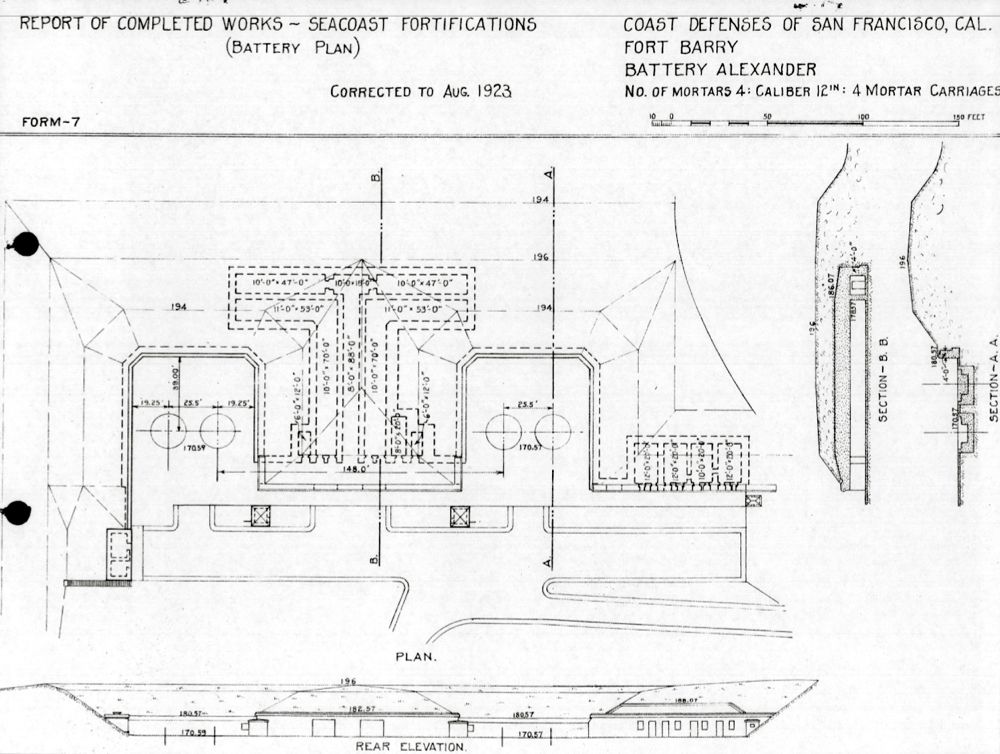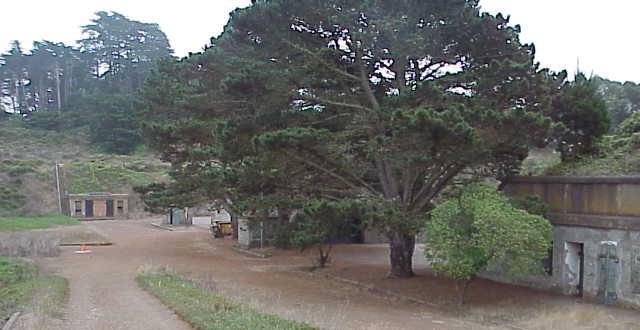







The following is information on the Model 1890 Mortar in Pit A
In Pit A, the reference of crest was--180.97 feet, - Top of concrete on which lower surface of ring rests is 168.26 feet above M.L.L.W, and the top of the concrete which lower surface of base ring rest to top of interior is 12.71 feet.
Mortar #1 serial # 160 was mounted in December 1903 under the supervision of 2nd Lieutenant Nat F. Jamieson, the limits of elevation as mounted and emplaced, 71º-28 feet, and the number of shots fired from this Mortar from 14 November 1917 to 2 September 1941 was 134.
Mortar # 2 serial # 159 was mounted January 1904 supervision of 2nd Lieutenant Nat F. Johnson, limits of elevation of mortar as mounted and emplaced, 71º-28 feet, and, the number of shots fired from 8 May 1916 to 14 November 1917 was 47. (this mortar was removed 25 June 1918).
Mortar #3 serial #147 was mounted February 1904, under the supervision of 2nd Lieutenant Nat F Jamieson, limits of elevation of mortar as mounted and emplaced, 71º-28 feet, and the number of shots fired from 14 November 1917 to 2 September 1941 was 186 (this mortar was moved into Pit B, # 2 in this time period).
Mortar #4 serial #150 was mounted August 1906, under the supervision of 1st Lieutenant G.E.Manning, limits of elevation of mortar as mounted and emplaced, 71 º-28 feet, and the number of shots fired from 7 May 1916 to 8 May 16 was 36. (This mortar and Carriage was removed June 25 1918 and shipped to the Ordnance Department at Fort Scott).
The following is information on Mortars Model 1896 in Pit B
In Pit B the reference to the crest 180.97 feet- Top of concrete for which lower surface of base ring rest is 186.26 feet above M.L.L.W.--Top of concrete on which lower surface of base ring rests to top of interior crest is 12.71 feet.
Mortar # 1 serial # 151 limits of elevation as mounted and emplaced, 71 º 28 feet, and was mounted March 1904 under the supervision of 2nd Lieutenant N.F.Jamieson. Numbers of shots fired from 16 November 1917 to 5 April 1929 was 127.
Mortar # 2 serial #148 was mounted and emplaced, 71 º 28 feet April 1904, under the supervision of 2nd Lieutenant N.F.Jamieson. Number of shots fired from 7 May 1916 to 8 May 1916 was 37. (This mortar and carriage was shipped, June 25 1918 to the Ordnance office Fort Scott).
Mortar # 3 serial # 155 Mounted & emplaced, 71 º 28 feet in October 1904 under the supervision of 2nd Lieutenant N.F.Jamieson. Number of shots fired from 10 April 1918 8 August 1922 was 112.
Mortar # 4 serial # 145 was mounted and emplaced May 1904, 71 º 28 feet, under the supervision of 2nd Lieutenant N.F.Jamieson. Number of shots fired from 7 May 1916 to 14 November 1917 was 38 (This mortar and carriage was shipped to the Ordnance Department at Fort Scott on June 25 l918).
The following is information on Carriages Model 1896 in Pit A
Carriage # 1 serial # 280 was mounted December 1903 under the supervision of 2nd Lieutenant N.F.Jamieson, and was oriented in January & February 1906 by Corps of Engineers
Carriage # 2 serial # 278 was mounted January, 1904 under the supervision of 2nd Lieutenant N.F.Jamieson, and was oriented in January & February 1906 by Corps of Engineers
Carriage # 3 Serial # 277 was mounted January, 1904 under the supervision of 2nd Lieutenant N.F.Jamieson, and was oriented in January & February 1906 by Corps of Engineers
Carriage # 4 Serial # 283 was mounted and emplaced September 1906 under the supervision of 1st Lieutenant G.H.Manning, and oriented on December 1906 under the supervision Maj. C.H. Mckinstry. Removed from Pit A in August 18 1920.
The following is information on Carriages in Pit B:
Carriage # 1 Serial # 282 was mounted and emplaced March 1904 under the supervision of 2nd Lieutenant N.F.Jamieson, and was oriented in January & February 1906 by Corps of Engineers
Carriage # 2 Serial # 281 was mounted and emplaced April 1904 under the supervision of 2nd Lieutenant N.F.Jamieson, and was oriented in January & February 1906 by Corps of Engineers. Removed from Pit B June 25 1918.
Carriage #3 Serial # 284 was mounted and emplaced in October 1904 under the supervision of 2nd Lieutenant N.F.Jamieson, and was oriented in January & February 1906 by Corps of Engineers (Now # 2)
Carriage # 4 serial # 279 was mounted and replaced in May 1904 under the supervision of 2nd Lieutenant N.F.Jamieson, and was oriented in January & February 1906 by Corps of Engineers.



